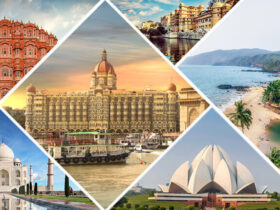Uttarakhand Flower Valley National Park is located in the western Himalayas. It is a beautiful and lively national park, famous for its blooming alpine meadows. Two of them together with Nanda Devi National Park form the Nanda Devi Biosphere Reserve. It also appeared on the UNESCO World Heritage List in 2005. In 1931, British climber Frank Smythe was originally named Bhyundar Valley, and in 1931 it was renamed Valley of Flowers trek.
This picturesque scenery is unique, with a variety of flora and fauna. This beautiful valley is also known as the place where Hanuman collects Sanjeevani Buti to heal Lakshmana. It is located high in the Himalayas of Garhwal. Every year, millions of tourists from around the world are attracted by the green pastures, beautiful mountains, and streams.
There are no human settlements in the park, and grazing is completely prohibited. Many international tourists visit the biosphere reserve because it is a UNESCO World Heritage Site. In this part of the Himalayas, in the transition zone between the eastern and western flora of the Himalayas, there are seven species from the bird exclusion zone. In fact, this is an unforgettable trip to the Valley of Flowers, because there are wild rose bushes, fragrant wildflowers, and wild strawberries everywhere.
The flora and fauna of the valley
The entire valley is surrounded by flowers of various colors and types, which gives this place a magical quality. More than 650 flowers have been discovered, including blue poppies, cobra lilies, and Brahma. Several rare and spawning animals have also appeared in the area. There are diverse wildlife in the valley, including Asian black bears, blue bears, brown bears, blue sheep, black-brown bears, and stingrays.
A variety of birds, including Himalayan golden eagles, Himalayan snowcock, sparrows, snowdrops, and Himalayan sandpipers. The park also offers a rich and diverse western flora and fauna, including Himalayan musk deer and snow leopard. The park has a buffer zone of 514,857 hectares, covering an area of 71,210 hectares. Snow leopards, mountain ungulates and other carnivores live in this area of the endemic bird area of the western Himalayas.
Hiking to Flower Valley National Park
Hiking to Flower Valley will definitely bring you one of the most beautiful hikes. After crossing the Araknanda River via the suspension bridge, the hike starts from Purna Village or Gowengat. After passing through the town of Purna, you can see the snow peaks between the green hills. There are cold water fountains and waterfalls along the 7-kilometer route between Pulna and Bhyundar villages.
Due to the presence of rhododendrons in this area, the area appears pink and deep red. After a short rest, continue walking to the right bank of the Laxman Ganges until there is a wooden bridge. After crossing the left bank, the path becomes steeper. The base camp of the Flower Valley tour from Ghangharia is 2 km away.
Good Read: Take a look at these places, pack your bags, and welcome the arrival of June!
Flower Valley National Park History
Three British climbers named Frank S. Smythe, R. L. Holdsworth and Eric Shipton left in 1931. They accidentally came to this exotic valley full of alpine flowers. They are admired for the beauty of this place and are called “Val de Flowers”. Later he also wrote a book about him and named him Huagu, one of Frank S. Smythe’s three climbers. The locals also know that this beautiful valley exists and they believe that there are heroes and gods there.
Because the flowers in the valley are covered by the Himalayas, they are covered by snow for most of the year. In the late summer months, heavy rain and fog can also be seen on the scene. From mid-July to mid-August, when the snow falls this year, colorful flowers will bloom. It is warm during the day and cold at night and the weather is pleasant.
Tips for visiting Flower Valley National Park
- Hiking is a bit laborious, so take a break along the way.
- Be sure to wear other clothes when it rains.
- Bring some food for a walk.
- As the accommodation has become very crowded, it is recommended to reserve it in advance.
- You can also hire a porter at Govind Ghat to make walking more comfortable.
- There are no toilets on the hiking trails or in the valleys, so you need to relax in nature.
Good Read: Best Hiking Places in India – This is your wise hiking guide for the month!








Leave a Reply